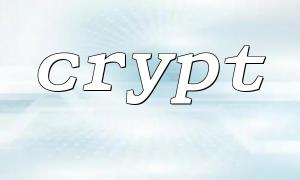In PHP projects, password encryption is an important part of ensuring the security of user data. The two common password encryption methods are the crypt() function and the password_hash() function. So, which one should I choose? What is the difference between them? This article will analyze the characteristics of these two in detail to help you make a more suitable choice.
crypt() is a relatively low-level password encryption function in PHP, which is implemented based on the system's encryption algorithm. This function is more flexible and supports a variety of encryption algorithms (such as DES, MD5, Blowfish, SHA-256, SHA-512, etc.), but it is relatively complicated to use and requires developers to manually specify the encryption algorithm and salt value (salt).
$password = 'mysecretpassword';
$salt = '$2y$10$' . substr(strtr(base64_encode(random_bytes(16)), '+', '.'), 0, 22);
$hashed = crypt($password, $salt);
echo $hashed;
Here, $2y$ represents the Blowfish algorithm, 10 is the cost parameter (cost), and the salt value needs to be generated manually.
Supports multiple encryption algorithms.
High flexibility and suitable for projects with specific needs.
The developer needs to handle the salt value by himself, which is prone to errors.
The code is complex and can easily lead to security vulnerabilities.
Does not have the ability to automatically upgrade algorithms.
password_hash() is a password hash function introduced in PHP 5.5+, which is specially used for password encryption. It has built-in safe algorithms and automatically generates salt values, which are simple and safe to use.
$password = 'mysecretpassword';
$hashed = password_hash($password, PASSWORD_DEFAULT);
echo $hashed;
PASSWORD_DEFAULT will automatically use the most secure algorithm (usually bcrypt) and will automatically generate salt values, eliminating the cumbersome operations of developers.
Automatically generate safe salt values.
Concise and easy to use, clear code.
Support password verification function password_verify() .
Supports hash algorithm upgrade to facilitate subsequent security maintenance.
Slightly weak in flexibility and does not support custom salt values.
Relying on the PHP version, the lower version requires manual introduction of compatible libraries.
| characteristic | crypt() | password_hash() |
|---|---|---|
| Salt value processing | Salt value needs to be generated manually | Automatically generate safe salt values |
| Algorithm support | Various algorithms (need to be manually specified) | Use security algorithms (such as bcrypt) by default |
| Ease of use | Complex, requires careful design | Simple, recommended |
| Password verification | Need to be processed manually | Simplify using password_verify() |
| compatibility | Compatible with all PHP versions | Requires PHP 5.5 and above |
| Security | It is easy to cause safety problems due to improper use | More secure and easy to maintain by design |
In modern PHP projects, it is recommended to use password_hash() for password encryption. It not only reduces the difficulty of development, but also ensures higher security and maintainability. Although crypt() is powerful, it is complex in use and prone to configuration errors. It is recommended to use it in specific scenarios (if it needs to be compatible with very old systems).
After creating a hash with password_hash() , it is very convenient to verify the password:
$hashed = password_hash('mysecretpassword', PASSWORD_DEFAULT);
if (password_verify('mysecretpassword', $hashed)) {
echo 'Password verification succeeded';
} else {
echo 'Error password';
}
Choose password_hash() : a simple, secure and modern password encryption method, suitable for most application scenarios.
Choose crypt() : It can be considered when there are special needs or when there are custom requirements for encryption algorithms, but the threshold for use is high and the risk is high.
In order to ensure the security of user information, it is strongly recommended that PHP developers give priority to password_hash() and combine password_verify() for password verification to ensure that the code is both concise and safe.















